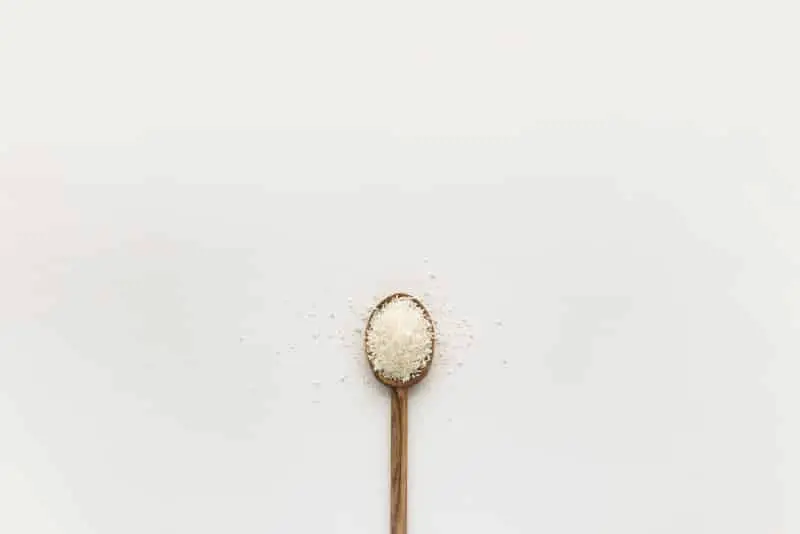Table of Contents
The misunderstood life of salt’s big brother.
Love it or fear it, MSG is everywhere.
It’s in your soups, your condiments, and even in parmesan cheese. But what is it?
Let’s Dispel Some Rumours About “Dangerous MSG” First
MSG is described as a flavour enhancer, a title held by a group of compounds that can be added to food to enhance their natural flavour. It is not a Frankenstein chemical that you should be afraid of and it is no different to the hundreds of different additives you consume daily.
You may have heard that many people associate headaches, dizziness and palpitations with this miracle seasoning, however, did you know that these myths were founded in 1968 when the New England Journal of Medicine received a letter claiming that Chinese food was causing these ailments? This very same letter was quickly found to be a hoax, yet it spurred dozens of medical studies into the effects of MSG on the public — all of which have concluded that there are no measurable dangers from consuming MSG.
In January 2020, comedian and chef Eddie Huang teamed up with Jeannie Mai to expose the unfair prejudices towards MSG and prove that it is not dangerous
But What Does It Do?
MSG is primarily added to foods to increase the umami levels in a dish. If you aren’t sure what umami is, it is the fifth basic taste:
The Five Basic tastes
- Sweet
- Sour
- Salty
- Bitter
- Umami (This one)
It is typically described as being savoury, or meaty like hearty stews and roasted mushrooms; also, it is associated with the annoyingly vague quality of mouth-feel.
Umami is the most recently discovered taste, but one we have been enjoying for thousands of years.
The basic principle to remember is that it amplifies flavours — both good and bad. It binds with the umami receptors on your tongue and intensifies anything you taste. Using it with a cheese sauce is an excellent example, as cheese is already high on the umami rankings list; doing so will provide a deeper, fuller balance of flavours, instead of a one-note cheese taste.
It can also be very useful in balancing spicy foods, with it being able to round out most spiced dishes, just like using different sources of spice would (Pepper, Chilli, Garlic).
Okay, So MSG is NOT Dangerous And It’s Delicious, But How Do I Use It?

Well, first of all, you should know what you are adding to your food — so grab a little bit and try it. No more than a few grains on your finger.
It should taste like Doritos. No, seriously.
For most of us, the main flavour we associate with MSG is not a flavour at all, rather a group of flavours. Take-out food, potato chips and ramen are massive consumers of MSG, so much so that we can’t help being reminded of them when tasting it alone.
But don’t worry! Your next soup won’t taste like the cheesy dusting on the surface of a potato chip — unless that’s what you’re going for.
Instead, consider the amount you will want to use; for most applications (99%), you will want to use no more than half a teaspoon. This is enough for most recipes, adding too much can lead to an unpleasant feeling in your mouth that will definitely be noticeable.
Use it anywhere you would use salt, except for sweet foods. The effect of MSG on sweet foods has been found to be almost non-existent due to their lack of umami, and when you can actually tell the difference, it isn’t for the better. So, by using it in place of salt in savoury dishes you can almost guarantee that it’s an improvement.
Here Are Some Specific Uses for MSG in Your Kitchen
I get it, MSG is amazing and you can’t wait to try it. But what should be the first thing you try? After all, with how awesome it is, you are spoiled for choice.
Here are some of my favourite applications for MSG.
As a Substitute for Soy Sauce and Fish sauce
So-called umami bombs are often loaded with soy and fish sauce, but did you know that a small amount of MSG can produce very similar results. So much so that when a recipe calls for either of these in small quantities I will usually replace them with a pinch of MSG.
Enhancing tomato-based sauces
Tomatoes are one of the most surprising foods that can benefit from MSG, the bright red fruit-lookalike might look sweet, but in practice, tomatoes have some of the highest occurring levels of glutamate amongst many other foods.
Ground meats
Sometimes you find yourself in a difficult situation — maybe you are trying to eat healthier and have substituted your meatball mix for ground turkey, only to realise how tasteless it can be. In this situation, MSG can mean the difference between a great recipe, or a bland mess.
Broths and Soups
One thing I haven’t mentioned about MSG is that it is better when dissolved in a liquid and heated — such as in a broth or soup. It is allowed to disperse better and becomes much better at amplifying each sip and slurp.
Gravy
Similar to broth and soup, gravy benefits from its water content, but also from the improved mouthfeel. So much so that I have seen a cheat Demi-Glace put MSG to great use in replacing lost collagen.

Do You Believe MSG Belongs In Your Food?
Just like salt has in the past, MSG has developed quite the bad-boy reputation for being dangerous, however just like anything else — moderation is key. Despite all the praises and wonderful uses I have taught you today, I ask you not to throw MSG into every single recipe.
Doing this can make you dependent on quick fixes and magical flavour powder, instead of teaching you basic seasoning techniques. So, wield your new superpower wisely and enjoy a new world of flavours.
Use MSG as often as it is needed, but do not confuse it as a requirement for good food.










